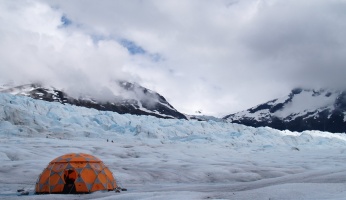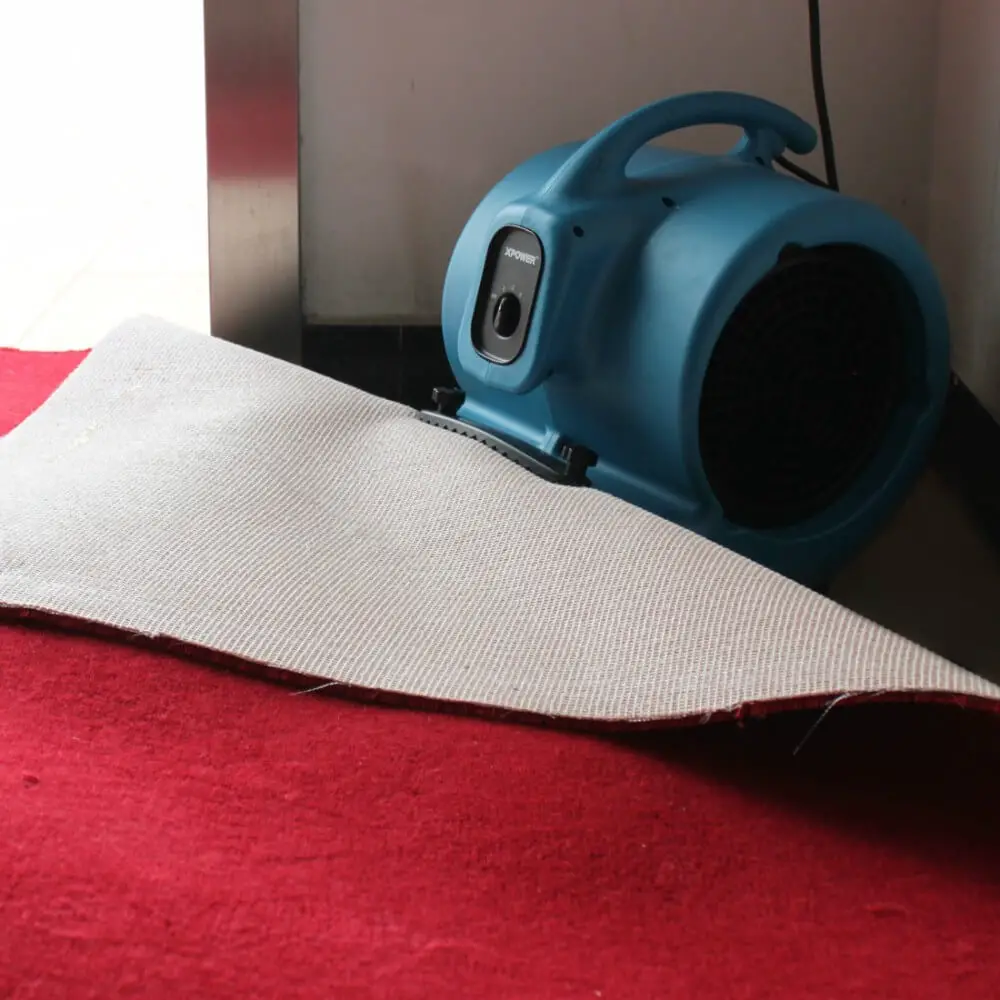Survival Skills: How to Survive a Tsunami
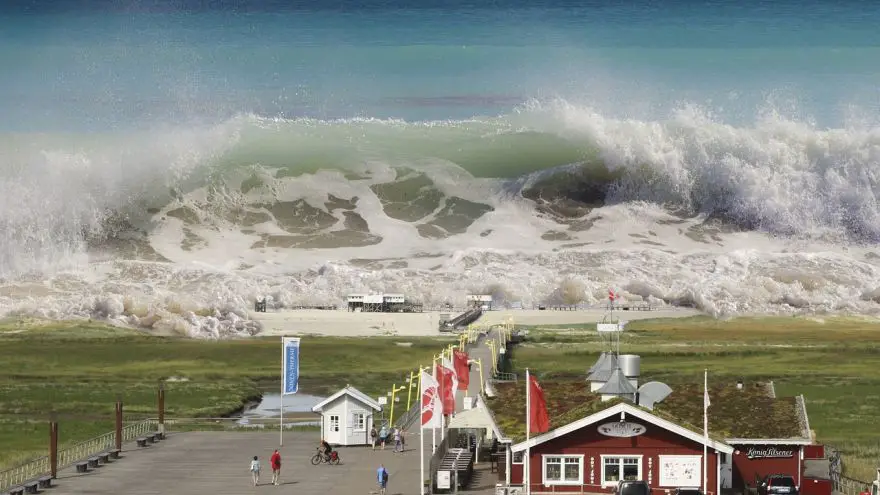 Survival Skills: How to Survive a Tsunami
thegearhunt.com
Survival Skills: How to Survive a Tsunami
thegearhunt.com
If you aren’t familiar with the term ‘tsunami’, these are massive ocean waves that are typically created by earthquakes that occur beneath the floor of the ocean, or by massive oceanic landslides. Tsunamis can rise to gigantic heights and can strike the coast they have targeted with a force that can be devastating. People in lower coastal areas or on beaches, near rivers or estuaries, need to know that tsunamis can happen within only a matter of minutes following an earthquake – which isn’t very long for warnings – and they can continue for hours. They happen during any time of the year and regardless of whether it is day or night.
Tips
In order to get away from a tsunami, you need to go as far and as high as you possibly can. Ideally, this should be a spot that is a minimum of 2 miles away or 100 feet over sea level.
Each foot you get upward or inland can make a difference when it comes to your safety.
If you are able to see the wave, you will know that you are too close to be completely safe.
The Difference
When there is a tsunami warning, this means that a tsunami has been created and might be near your area.
When there is a tsunami watch, this means that the creation of a tsunami hasn’t been confirmed but could happen and might happen in as little as an hour.
Before a Tsunami
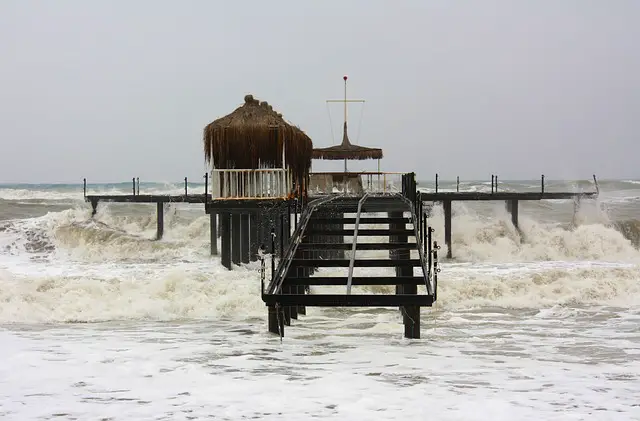
If you live in a coastal area, you need to make sure that you are always prepared for an emergency of this nature. That means that you will need to have an emergency preparedness kit. You will also need to have a plan for the evacuation of your household, including any animals you may have. Additionally, you need to ensure that you remain informed regarding the risk and response plans that your community has. The Red Cross has a Safe and Well website and you, along with everyone else in your family, need to know how to use it. They also have an Emergency App that is available for Android and iPhones.
Preparing for the Wave
Your main priority here should be protecting your family. You should talk about the subject of tsunamis with them so that they each know what they should do in case this situation ever arises. Talking about things like this can help everyone in the family feel more comfortable and have less fear should it ever happen.
You can also check with the day cares, schools, and workplaces of your family members to discern whether or not they are in an inundation or tsunami hazard area. If they are, learn what their plans for evacuation are, and determine a designated area where you will be able to pick your kids up.
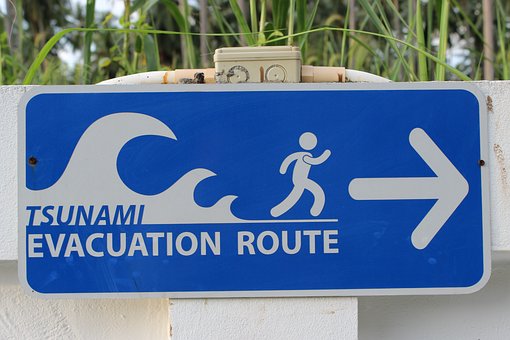 Make a plan for evacuation routes from your workplace, the children’s schools, your home, or anywhere else you might be when there is the threat of a tsunami.
Make a plan for evacuation routes from your workplace, the children’s schools, your home, or anywhere else you might be when there is the threat of a tsunami.
If it is possible, try to find spots that are either 2 miles from the coast or a minimum of 100 feet above sea level where you can wait out the event.
If you aren’t able to get that far or that high up, get as far or as high as possible. Each foot further inland or higher up you are can mean the difference between life and death. You need to be able to reach the highest elevation you can within a matter of 15 minutes when you are on foot.
Practice the routes you choose for evacuation. Being familiar with it can save your life. You should be able to use your escape route during bad weather as well as at night.
Have a conversation with your insurance agent. Most homeowner’s policies will not cover any type of flooding that is caused by tsunamis. You might want to ask them about the NFIP (National Flood Insurance Program). This does cover damage from a tsunami, but your entire community needs to be one that participates in the program. Find out more at www.fema.gov/nfip
Ensure that you always have access to radio broadcasts by NOAA. You can do this either by locating an NOAA radio station online or by downloading the NOAA radio app from Google Play or the Apple store. You can also visit the Red Cross online store and buy a hand crank or battery powered NOAA radio.
Protecting Your Home, Animals, and Pets
If you live near the coast, stay away from buildings that are within a few hundred feet of the water. These are the areas that will be the most damaged from coastal storms, strong winds, or tsunamis. You can find more information on this at the site for the Institute for Business and Home Safety.
If you do happen to live on the coast, consider raising the elevation of your home so that damage will be reduced. Most of the time, waves from tsunamis have a height of fewer than 10 feet. Still, you need to take precautions from flooding.
You might even consider hiring an engineer to come and check your home out. They can advise you on ways that you can make your home more resistant to tsunamis. There might be a few ways to divert those dangerous waves away from the property. Also, walls that aren’t built right can make the entire situation even worse.
You should make lists of things to bring into the house in case a tsunami warning or watch has been issued for the area you live in. Keep in mind though that you might need to immediately evacuate. Don’t make the mistake of risking the safety of yourself or your family to save belongings that can be replaced.
During a Tsunami
 If you ever are in a situation where you feel a strong earthquake and you are near the coast, the first thing you should do is to drop, take cover, and hang on to protect yourself as best as possible.
If you ever are in a situation where you feel a strong earthquake and you are near the coast, the first thing you should do is to drop, take cover, and hang on to protect yourself as best as possible.
When the ground stops shaking, gather everyone in your home and go over the plan for evacuation. You might be under a tsunami warning in a matter of minutes.
You should use your NOAA weather radio for any emergency information available. You can also tune in to a Coast Guard emergency frequency, television, or radio station.
Be sure that you follow any sort of instructions that may be issued by your local authorities. The evacuation routes that are recommended might differ from the ones you planned. You might also be advised to go farther inland or to a higher altitude.
When you detect the signs of a tsunami or hear the official warning for one, you need to immediately evacuate. Remember that warnings for tsunamis are only issued when the actual threat exists, and you might not have too much time to leave.
When you do have to evacuate, make sure that you take the emergency preparedness kit you put together. Having access to medicines and/or supplies can ensure that you are more comfortable and safer in the event of an evacuation.
If you do ever need to evacuate, ensure that you take any animals you might own with you. If conditions aren’t safe for you then they aren’t safe for critters either.
Immediately go to ground that is higher and as far inland as you can. Keep in mind that trying to watch from a cliff or beach might be extremely dangerous. Remember the mantra: If you can see the actual tsunami wave, you are far too close to get away from it.
You should always avoid any power lines that have come down and keep away from things like bridges and buildings that heavy objects might fall from if there are any aftershocks.
Remain in your evacuation place until any local officials inform you that it is safe for you to return. Tsunamis are actually entire series of waves that might continue for hours after the initial one. Don’t ever make the assumption that the danger has passed after the first wave. The next one might be even larger.
After the Tsunami
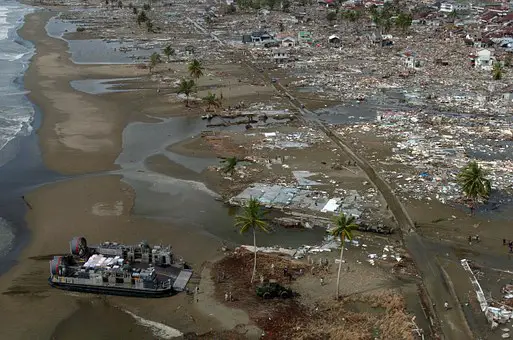 Once the tsunami is over, you need to make sure that your family and friends know that you and your family are safe. You can do this on the Safe and Well website of the Red Cross.
Once the tsunami is over, you need to make sure that your family and friends know that you and your family are safe. You can do this on the Safe and Well website of the Red Cross.
If you have evacuated, don’t try to return until you have been told that it is safe for you to.
Keep listening to your NOAA weather radio or to the news for updates on instructions and information.
If anyone near you has been injured, check the scene to see if it is safe for you to approach them. Call to get help for them. If you have been trained, try to provide them with any first aid possible until the emergency help that you called for arrives.
Caring for Loved Ones and Yourself
Stay away from any sort of disaster areas. Your being there might hamper any sort of emergency and/or rescue operations and it can even put you at more risk from any residual effects of a tsunami, like mudflows, landslides, crumbled roads, contaminated water, and other dangers.
If the earthquake that triggered the tsunami was large and near you, expect there to be some aftershocks. Sometimes aftershocks can also be large, and they can be able to trigger yet another tsunami. In some extreme cases, it might even take months for aftershocks to end.
Be aware of how your loved ones and you are handling the stress that is inherent with situations of this nature. Try to promote emotional recovery as well as you can.
Watch your critters very closely and ensure they stay calm and with you.
Assist anyone who needs it. This might be people who have disabilities and those who care for them, large families, those who don’t have any sort of transportation, the elderly, and infants.
Going Home
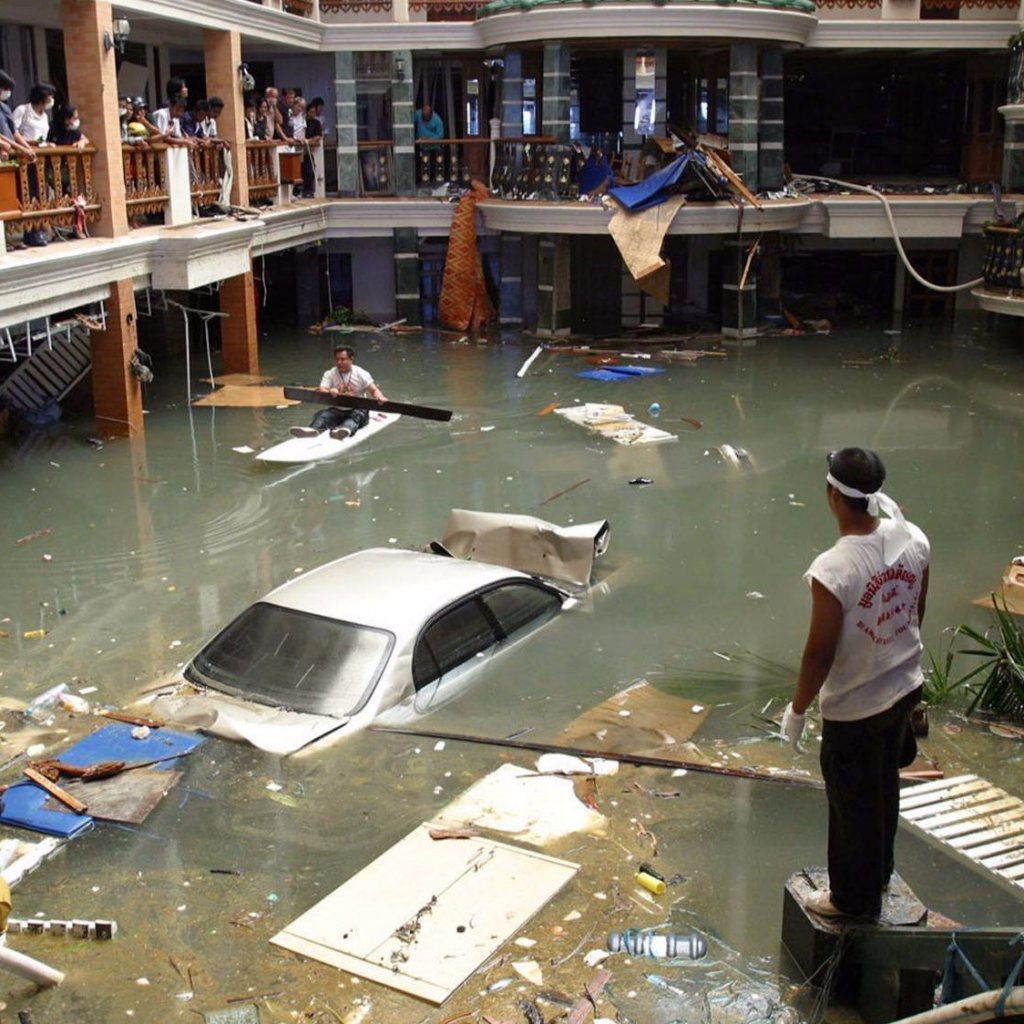 Steer clear of buildings that have been damaged and ones that are surrounded by water. Water from tsunamis, just like flood water, can damage the foundations of buildings, leading to buildings collapsing, sinking, etc.
Steer clear of buildings that have been damaged and ones that are surrounded by water. Water from tsunamis, just like flood water, can damage the foundations of buildings, leading to buildings collapsing, sinking, etc.
Check on your supplies of food. Anything that has been in contact with water from the tsunami might be contaminated and will need to be thrown out.
Keep an eye out for things like broken gas lines and downed power lines. Report them immediately to the proper utility company. If you hear a hissing sound or smell gas in your home, open at least 1 window and get your family out of there quickly. Turn the gas off using the main valve outside if possible and get in touch with the gas company.
After you experience a tsunami, you should always check your utilities and systems as well as inspect the structure of your home.
If there is any damage to anything inside your home or to your home itself, take pictures for the purposes of the insurance company.
Tsunami Facts vs. Fiction
Fiction: Tsunamis are essentially giant walls that are made from water.
Fact: At times, they can actually form walls made from water. These are called tsunami bores. However, they typically tend to look like a flood that rises and recedes quickly. They can be almost like a tide cycle that occurs in minutes as opposed to 12 hours.
Fiction: Tsunamis are single waves.
Fact: Tsunamis are actually a series of waves. Many times, the first one of the waves isn’t even the biggest one. Typically, the largest wave might not come to shore for a few hours. If the earthquake that triggered it was quite a large one, there can even be multiple series of waves. This tends to happen when the earthquakes trigger landslides that can then trigger more tsunamis.
Fiction: Boats need to move to a harbor or bay for protection.
Fact: Tsunamis can be at their most destructive in harbors and bays. This isn’t simply due to the waves, but because they can generate violent currents in the local waterways. A tsunami is at its least destructive when it is still in open, deep ocean water.
Fiction: Tsunamis and tidal waves are the same things.
Fact: A tidal wave is just a regular wave that is caused by the tide. They are triggered by the interaction of the gravity from the moon on the earth. Tidal wave is a term that has been used by laypeople to mean tsunami, but they are two very different things in reality.
Sources
- YouTube, How to Survive a Tsunami – Survival Hacks
- U.S. Geological Survey, Surviving a Tsunami – Lessons learned from Chili, Hawaii, and Japan
- The Art of Manliness, How to Survive a Tsunami
- Popular Science, How to Survive a Tsunami







